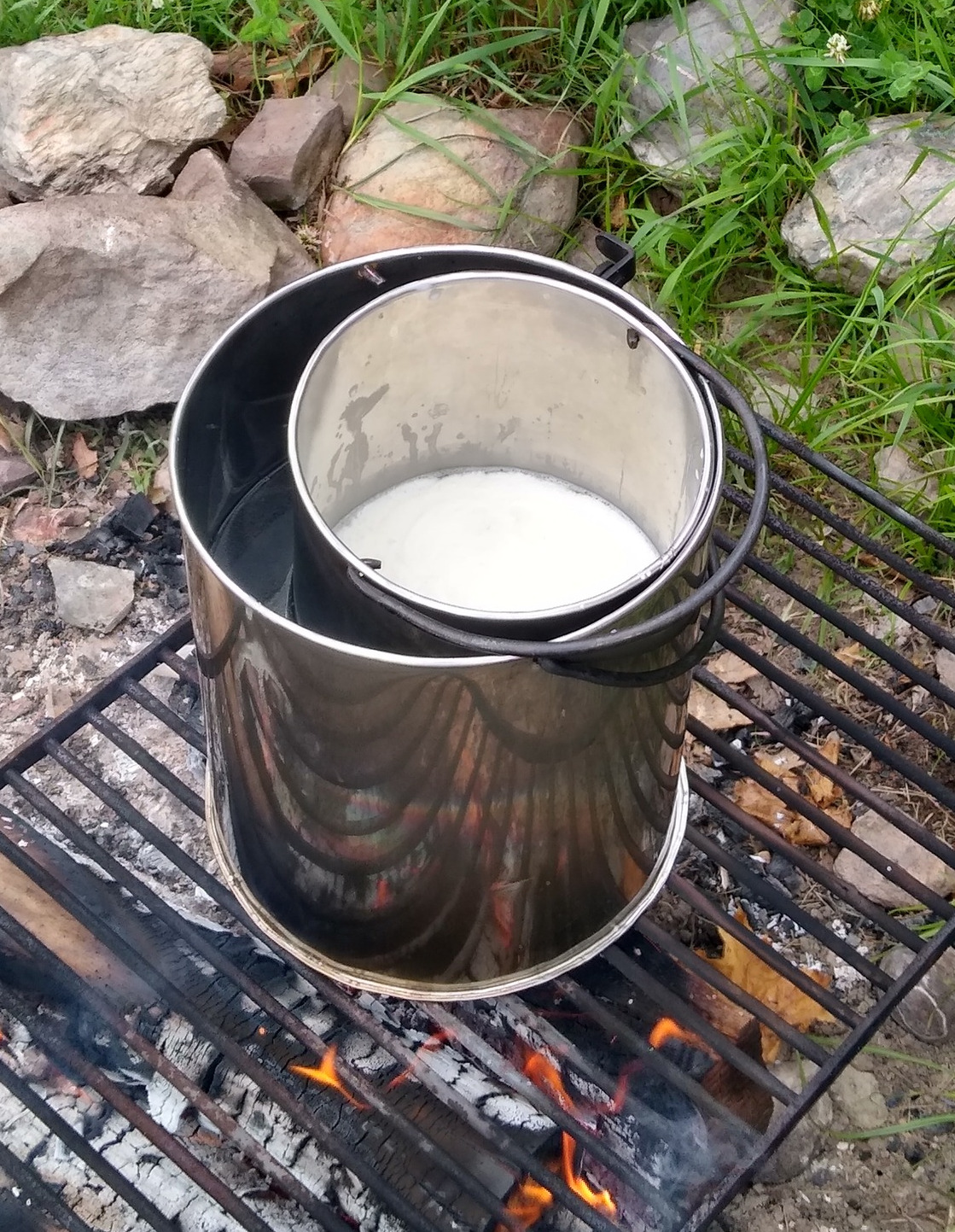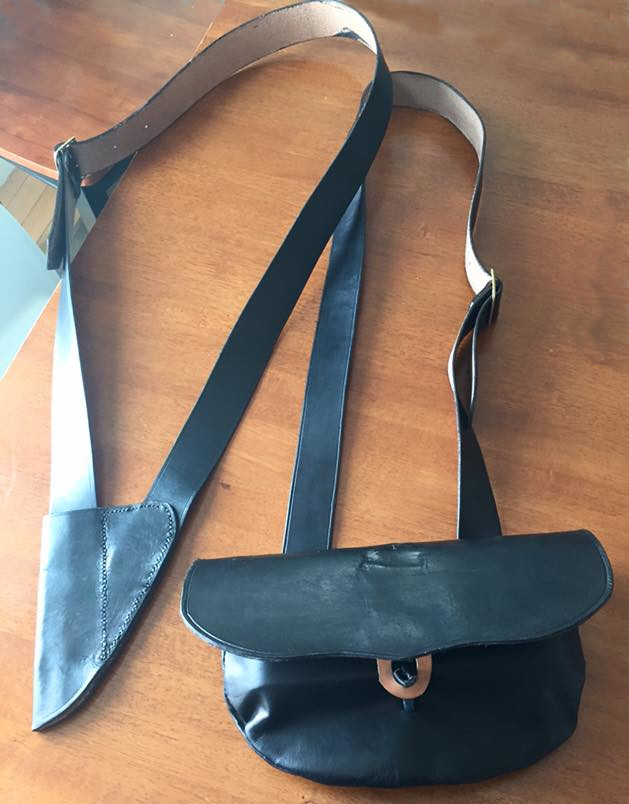
Care of Field Accoutrements
Leather:
A mixture of Neats foot oil and melted beeswax (1:1) protects and softens leather. For initial treatment, melt the mixture and “paint” on the leather with a 1-2” natural bristle brush. Let penetrate and dry for several hours. Additional heat from a hairdryer may be needed if the coating is too thick and the leather did not absorb it before the wax set. Later coats are rubbed in by hand. Although a clean cloth can be used, usually your hand works best.
To remove mold and mildew from leather, dry the object to inactivate the spores. Leave in the sun for 10-20 minutes and the UV rays will kill the spores. Drying the "bloom" in an oven will also inactivate the mold. Once the "bloom" or active mold looks and feels dry--wash your hands with an anti-fungal soap!--you can just vacuum it off. An alternative is to freeze the object and then let it thaw and air dry and vacuum the spores.

Tinware:
NEVER scour tin ware, as it removes the tin coating and leads to rusting. It is advisable to use wooden utensils in tin ware to reduce scratches to the surface. Dry tin items with a rag, and immediately wipe down with sweet/vegetable oil to prevent rust.
Canteens:
Tin canteens should be stored empty with the stopper off to prevent molding. Prior to use, rinse with "sweet water" (adding a teaspoon of baking soda), re-rinse and fill.
Wooden canteens should be stored full. Prior to use, rinse with fresh water followed by sweet water. Shake well and re-rise with fresh water.
If a wooden canteen is allowed to dry out, soak the entire piece for a minimum of 8 hours overnight (two days is better) to swell the wood. Treat with sweet water, shaking well, rinse with fresh water and fill.

Stiffening Felt Hat Brims:
The brim of all felt hats, especially round hats, will inevitably begin to loose its stiffness and begin to droop. Renewing the brim is not difficult. These directions are copied from Roy Najecki’s web site and are period correct:
- Let the brims down and brush out the loose dirt from the felt.
- Make a mixture of 1 part shellac (white or orange 3 lb cut) to 2 parts denatured alcohol.
- Liberally brush the mixture to one side of the felt. It should quickly absorb into the felt and not lay on the surface. Allow to dry thoroughly (about 8 hours).
- Repeat to other side of felt. Apply additional coats if desired.
A modern alternative is to use spray on starch or a product called “Stiffy” from a craft store.

Weatherproofing:
Moccasins, period shoes, gaiters, and spatter dashes should be weather proofed (actually resistant is a better description). The mixture described in the section on leather care can be used on shoes, moccasins. Cuthbertson recommends “black ball”, a mixture of beeswax, tallow and lamp black, (or ashes, soot). It is applied like a crayon, scrubbed in with brush and buffed with a second brush. Treated accoutrements will remain slightly tacky and quickly attract dust, so buff frequently if you want them to look dressy.
Haversacks should also be treated. Simple beeswax provides excellent protection. Melt beeswax and “paint” a light coat to the outside of the haversack. Heat item next to a fire, with a hairdryer or in an oven (set on low) to re-melt the wax and help it penetrate the fibers. Boiled linseed oil can also be used.
Knapsacks are weather proofed by painting with boiled linseed oil (often mixed with iron oxide as a binder and pigment) or latex paint. See the 1st Sjt. about correct colors for painting your knapsack. Only the weather facing sides of the knapsack should be treated. When painting, use circular stokes to work the mixture into the spaces between the fibers. Use light applications; two to three coats is usually required.
Notes about using linseed oil:
Linseed oil produces heat as it dries and has the real potential for spontaneous combustion. Read the instructions and precautions carefully and follow them carefully. Do not dry freshly treated items in the sun! Always lay out or hang to dry in the shade.
